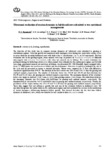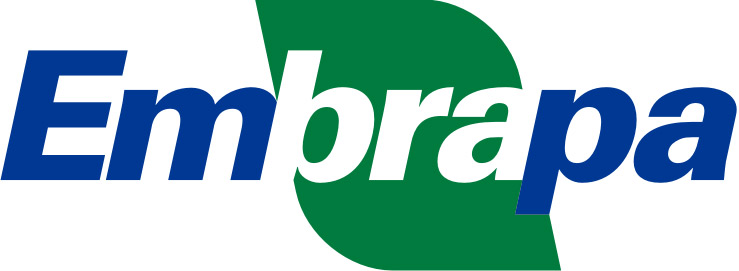Por favor, use este identificador para citar o enlazar este ítem:
http://www.alice.cnptia.embrapa.br/alice/handle/doc/1024364Registro completo de metadatos
| Campo DC | Valor | Lengua/Idioma |
|---|---|---|
| dc.contributor.author | FIGUEIREDO, P. O. | pt_BR |
| dc.contributor.author | AZAMBUJA, G. G. | pt_BR |
| dc.contributor.author | BARROS, L. C. | pt_BR |
| dc.contributor.author | CUMPA, H. C. B. | pt_BR |
| dc.contributor.author | FONSECA NETO, A. M. da | pt_BR |
| dc.contributor.author | PIVATO, I. | pt_BR |
| dc.contributor.author | MARTINS, C. F. | pt_BR |
| dc.date.accessioned | 2015-09-18T11:11:11Z | pt_BR |
| dc.date.available | 2015-09-18T11:11:11Z | pt_BR |
| dc.date.created | 2015-09-18 | pt_BR |
| dc.date.issued | 2015 | pt_BR |
| dc.identifier.citation | Animal Reproduction, v. 12, n. 3, p. 571, Jul./Sept. 2015. | pt_BR |
| dc.identifier.uri | http://www.alice.cnptia.embrapa.br/alice/handle/doc/1024364 | pt_BR |
| dc.description | The objective of this study was to compare ovarian dynamics of Indubrasil cows submitted to grazing or confinement regimes. Follicular growth was monitored daily starting at estrus during two consecutive estrous cycles in seven adult non-lactating Indubrasil cows with body score 4 (classification 1 to 5), in 2x7 experiment. The first evaluation was in the grazing regime, when animals were kept in pastures of Brachiaria brizantha cv Marandu intercropped with Leucaena leococephala, with water and mineral salt ad libitum. The second evaluation was performed during the following estrous cycle when animals were submitted to the confinement regime, and fed with corn silage, proteinated mineral salt and water ad libitum. An ultrasound HS 1500 (Honda®, Japan) equipped with a linear 7.5 MHZ probe was used to assess follicle and luteal dynamics. Data were recorded according to the day of the cycle and are presented as means ± standard deviation. Means were compared by T Tests and differences considered significant when P<0.05. The duration of the first estrous was 20±1.6 and 21±1.22 days for grazing and confined animals, respectively. The number of follicular waves was 2±0.49 and 3±0.40 and their duration was 9±1.99 and 9±1.65 days, for grazing and confined animals, respectively. The maximum diameter of the ovulatory follicle was larger in confined (15±0.51mm; p <0.05) than grazing animals (13±0.87mm). For subordinate follicles, the maximum diameter was 9±1.13mm and 9±0.82mm for grazing and confined animals, respectively. The dominant follicle persisted for 7±1.41 and 6±0.82 days in grazing and confined animals, respectively. Finally, the persistence of the corpus luteum was 14±1.59 and 15±1.06 days for grazing and confined animals, respectively. These data suggest that diet influences growth rate and size of the ovulatory follicle in Indubrasil cows. We speculate that greater dry matter intake in the confinement regime may have promoted an increase in the metabolism of steroid hormones, influencing dominant follicle growth. This abstract describes for the first time follicle dynamics in Indubrasil cows, which was found to be very similar to other Bos indicus breeds. | pt_BR |
| dc.language.iso | eng | eng |
| dc.rights | openAccess | eng |
| dc.subject | Feeding | pt_BR |
| dc.title | Ultrasound evaluation of ovarian dynamics in Indubrasil cows submitted to two nutritional managements. | pt_BR |
| dc.type | Resumo em anais e proceedings | pt_BR |
| dc.date.updated | 2015-09-18T11:11:11Z | pt_BR |
| dc.subject.nalthesaurus | estrous cycle | pt_BR |
| dc.subject.nalthesaurus | reproduction | pt_BR |
| riaa.ainfo.id | 1024364 | pt_BR |
| riaa.ainfo.lastupdate | 2015-09-18 | pt_BR |
| dc.contributor.institution | UNB; FACULDADES UNIFICADAS DO OESTE DO PARANÁ; FACULDADES ASSOCIADAS DE UBERABA; HEIDI CHRISTINA BESSLER CUMPA, CPAC; ALVARO MORAES DA FONSECA NETO, CPAC; UNB; CARLOS FREDERICO MARTINS, CPAC. | pt_BR |
| Aparece en las colecciones: | Resumo em anais de congresso (CPAC)  | |
Ficheros en este ítem:
| Fichero | Descripción | Tamaño | Formato | |
|---|---|---|---|---|
| 34708.pdf | 99.64 kB | Adobe PDF |  Visualizar/Abrir |









